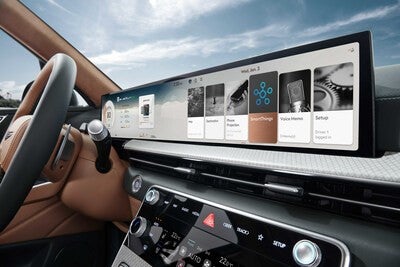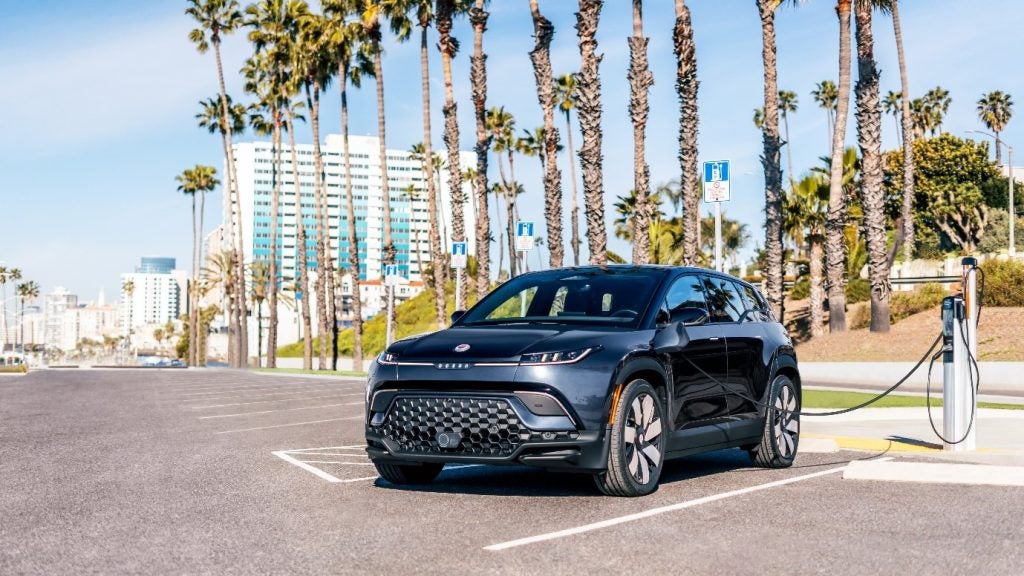
Hyundai Motor Group (HMG) has announced it has entered into a partnership agreement with Samsung Electronics to further develop its “Car-to-Home” and “Home-to-Car” connected services, with a view to increasing the connectivity between homes and cars.
The deal is designed to integrate Hyundai and Kia connected car services with Samsung’s Internet of Things (IoT) platform ‘SmartThings’, allowing vehicle owners to remotely control their digitalised home appliances via touch and voice commands in the on-board infotainment systems. They will also be able to control various vehicle functions remotely via AI speakers, TVs and smartphone apps.
Hyundai said the new connected system would allow vehicle owners to activate, for example, air conditioners and purifiers, start the robot vacuum or turn on the lights in their homes using the “Home Mode” of their vehicles’ infotainment systems before they reach home. Conversely, before going out, owners will be able to use the ‘Away Mode’ in their homes to prepare their vehicles for departure, including pre-activating the vehicle’s air conditioning or heating to a comfortable temperature.
In the case of Hyundai and Kia’s Car-to-Home service, users will be able to register and use specific modes for each situation to minimize device operation while driving. Owners of electric vehicles (EVs) will be able to use SmartThings’ integrated home energy management service to check the energy usage of their home and vehicle and adjust the optimal charging times.
Hyundai and Kia plan to also offer these connected services to overseas customers, by linking the connected car platforms and Samsung SmartThings.
Haeyoung Kwon, vice president of Hyundai and Kia’s Infotainment Development Center, said in a statement “this is an opportunity to make the connected car’s Car-to-Home and Home-to-Car services more convenient in various fields”.
How well do you really know your competitors?
Access the most comprehensive Company Profiles on the market, powered by GlobalData. Save hours of research. Gain competitive edge.

Thank you!
Your download email will arrive shortly
Not ready to buy yet? Download a free sample
We are confident about the unique quality of our Company Profiles. However, we want you to make the most beneficial decision for your business, so we offer a free sample that you can download by submitting the below form
By GlobalDataChanwoo Park, Executive Vice President at Samsung Electronics, added “this collaboration will enable communication from Home-to-Car and integrated home energy management services that are optimized for future lifestyles. By connecting the SmartThings platform with vehicles, we’ll be able to significantly enhance the customer experience in both the home and the car”.
Hyundai and Kia already provide Car-to-Home and Home-to-Car services through collaborations with telecommunication companies and construction companies. The current Car-to-Home service currently covers six items, including lighting, plugs, gas shut-off valves, ventilation, air conditioning and boilers, while the Home-to-Car service for vehicle air conditioning, remote start and charging management.
The partnership with Samsung will allow a broader range of devices to be controlled remotely. To achieve this connectivity, Hyundai and Kia said they will develop stable service-providing infotainment systems and subsequently provide these features through over-the-air (OTA) and USB-based updates even for existing vehicles.
Hyundai and Kia this month are expected to announce details of a restructuring plan designed to integrate more closely their respective electronics hardware and software R&D operations. This is expected to help them better develop and integrate next-generation software and hardware architectures for next generation software-defined vehicles (SDVs).







